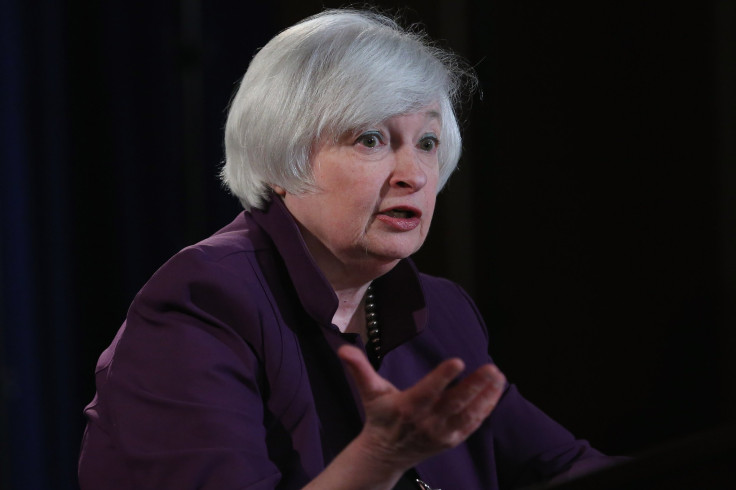Federal Reserve Interest Rate Decision: Janet Yellen, FOMC Leave Rates Unchanged

In one of the most widely anticipated Federal Reserve decisions in decades, the U.S. central bank left interest rates unchanged Thursday. The Fed's pronouncement to leave rates at historic lows -- where they’ve been since roughly the start of the Great Recession in 2008 -- signals the U.S. economy has yet to fully recover from the near collapse.
In leaving rates untouched, central bankers expressed concern about financial market volatility, fundamental aspects of the U.S. economy and the effect global developments -- such as China's economic slowdown -- might have on American business.
"Recent global economic and financial developments may restrain economic activity somewhat and are likely to put further downward pressure on inflation in the near term," the Fed said in its Thursday statement. "The Committee continues to see the risks to the outlook for economic activity and the labor market as nearly balanced but is monitoring developments abroad."
Market professionals are now searching for further hints as to the timing of the Fed’s future course for rate hikes. “Uncertainty from the Fed has been the biggest issue,” Stephen Guilfoyle, managing director of floor operations at Deep Value Inc., said from the floor of the New York Stock Exchange. “If they give us some length and depth of the tightening cycle and where they are headed, that would remove a lot of ambiguity.”
Along those lines, Fed chair Janet Yellen has said the central bank is on course to raise rates before the end of 2015. But she said in a Thursday press conference that the timing of the next rate hike is less important than the overall path toward lifting rates to noncrisis levels.
In her explanation of the Fed's decision, Yellen said domestic economic developments "have been strong." However, she also noted: "In light of the heightened uncertainties abroad, and the slightly softer expected path for inflation, the committee judged it appropriate to wait for more evidence, including some further improvement in the labor market to bolster its confidence that inflation will rise to 2 percent in the medium term."
U.S. central bank policymakers met for a two-day meeting Wednesday and Thursday, discussing whether tightening monetary policy too soon could damage the economy and dampen the prospects for maximum employment and the targeted 2 percent inflation.
Economists were evenly split on whether the Federal Open Market Committee, the central bank's board that determines the direction of monetary policy, would announce a change to its monetary policy. The Fed has signaled recently that it could begin returning interest rates to normal levels sometime this year, which would mark the first rate hike since 2006. However, mounting fears that China’s economic slowdown will ripple across the globe and infect U.S. growth had economists evenly split about the prospects of a rate hike this week.
According to a Wall Street Journal poll of 60 business and academic economists, 46 percent surveyed this month pegged September as the most likely time for the Fed’s first rate hike, while 9.5 percent said the Fed would lift off in October and 35 percent said it would wait until December. However, expectations have fallen sharply in the past few weeks amid stock market turmoil. In early August, 82 percent of economists thought the Fed would raise rates in September.
The Fed also released its updated projections for this year, including gross domestic product, the unemployment rate and inflation.
The central bank dropped the word "patient" from its statement in March, signaling the U.S. central bank is one step closer to ending near-zero interest rates. The move gave the Fed the option -- but not necessarily the obligation -- to raise interest rates at its discretion throughout 2015.
Since the removal of the word “patient,” the committee has introduced a new phrase in its speeches: the central bank needs to have “confidence in the outlook” that inflation will return to the 2 percent target.
© Copyright IBTimes 2024. All rights reserved.




















